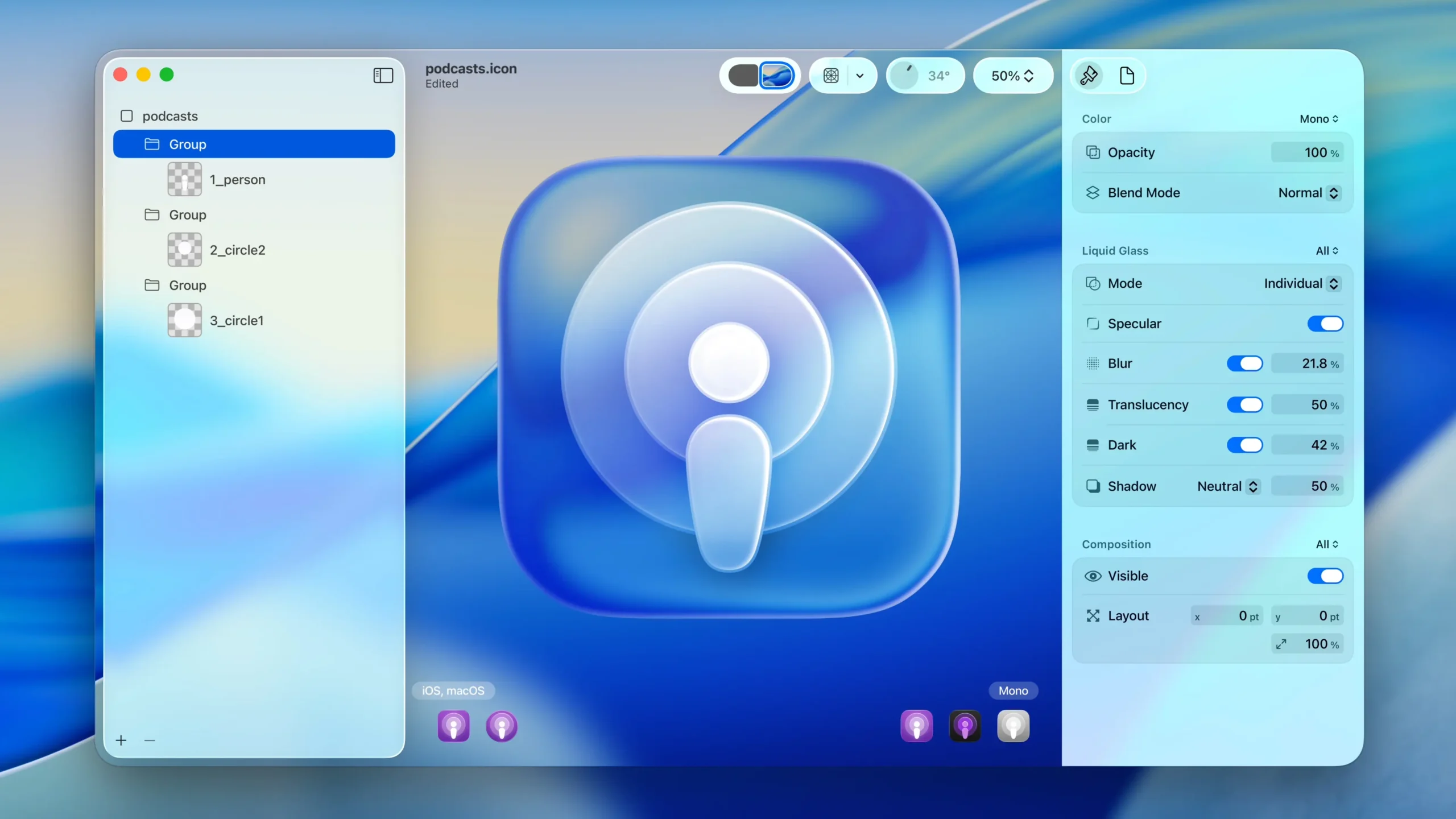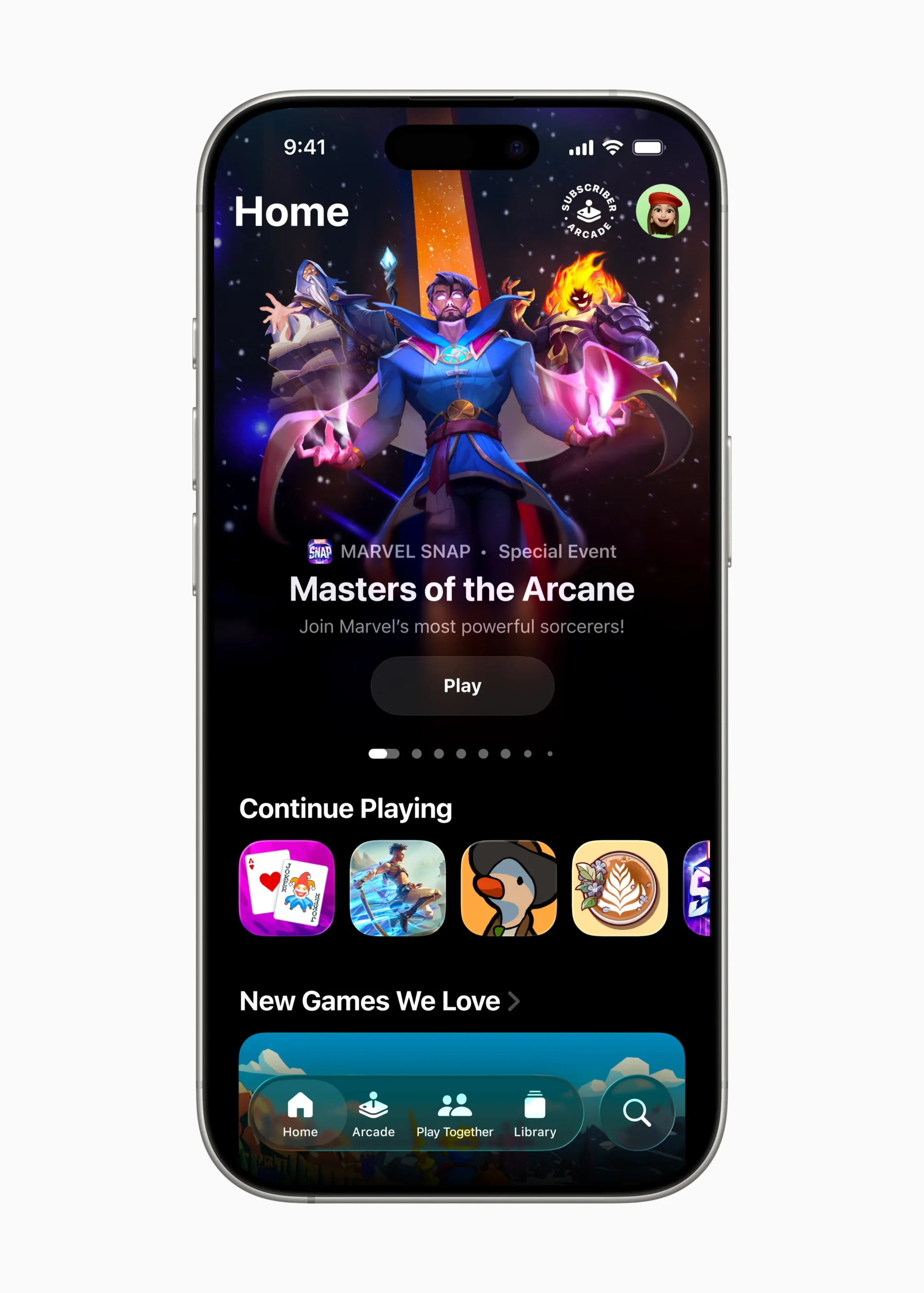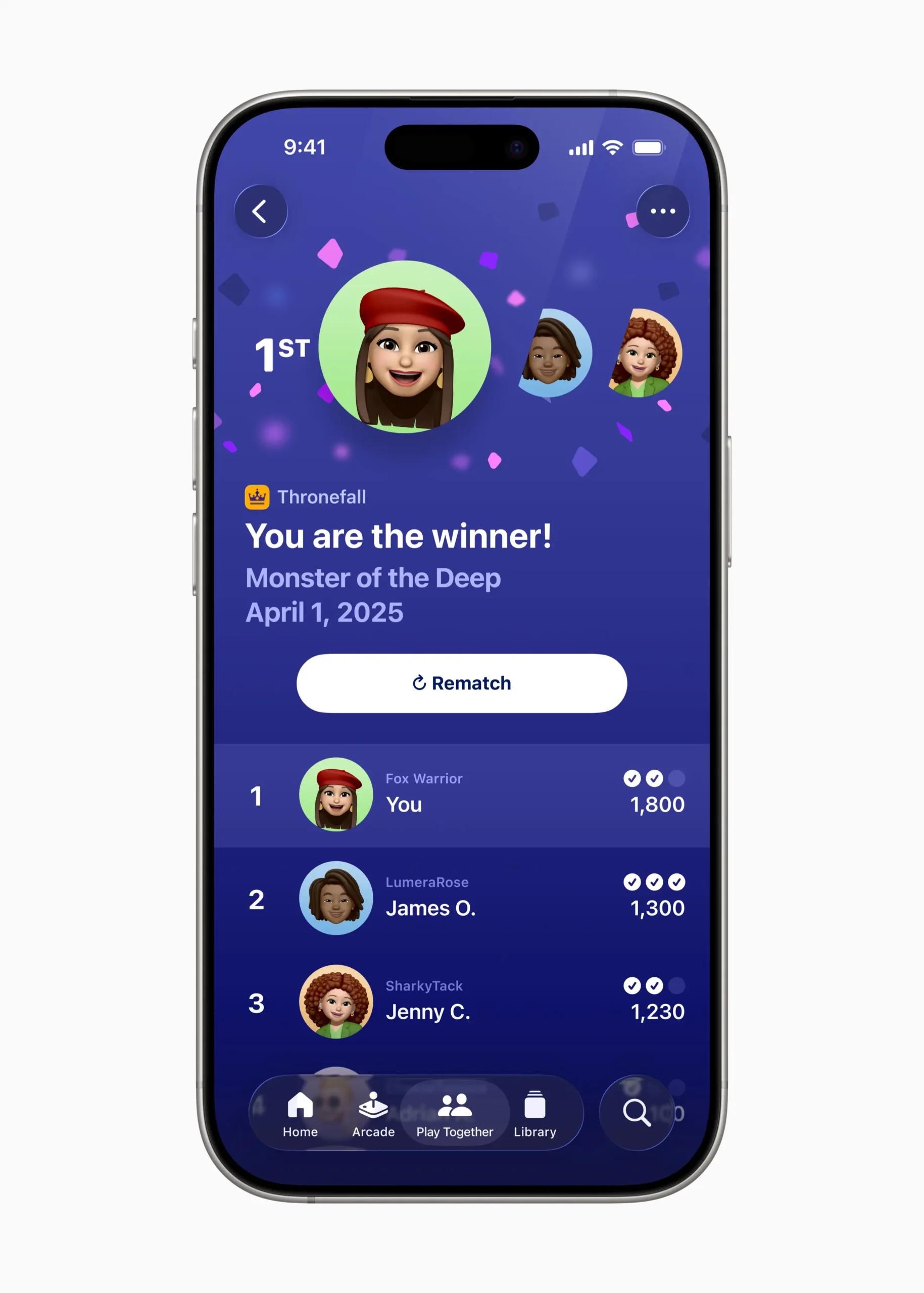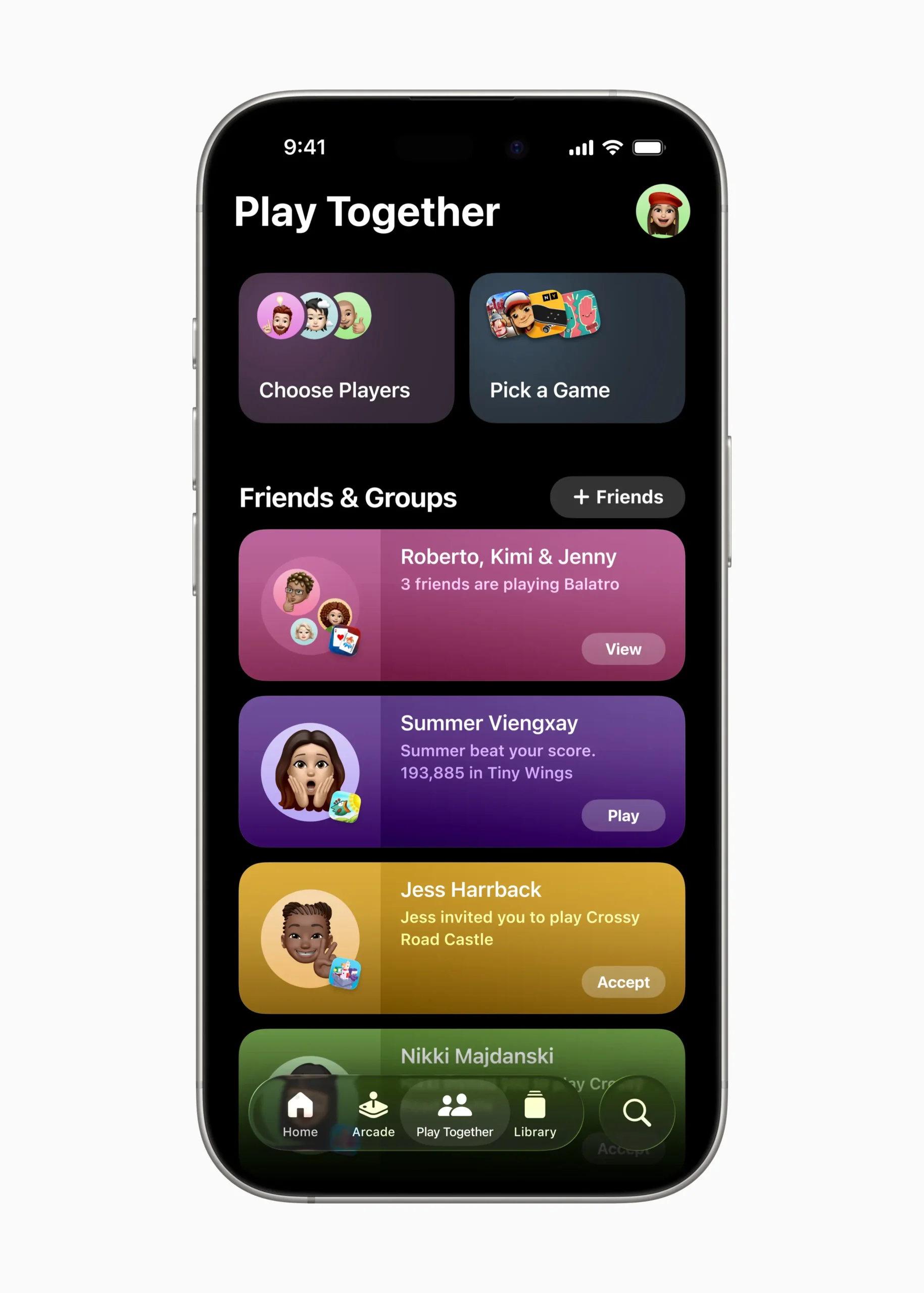At the heart of the 2025 upgrades is the seamless integration of Apple Intelligence into Xcode 26. Developers now have brand new Developer Tools that access on-device foundation models via a new Swift-native framework, enabling AI-powered features like tool calling, guided generation, and private inference — even when offline.
Xcode 26 introduces direct access to large language models, including built-in support for ChatGPT. Developers can write, test, and iterate code faster than ever, thanks to inline Coding Tools that suggest actions, generate previews, or fix issues on the fly. The experience is designed to keep developers in flow, boosting productivity while maintaining flexibility through external API keys or local models.
Apple’s new Foundation Models framework unlocks intelligent capabilities in just a few lines of code. For instance, Day One by Automattic now uses it to offer private, AI-enhanced journaling — a glimpse into what’s possible with Apple’s privacy-first approach to intelligence.

Xcode 26 and Foundation Models Bring Apple Intelligence to Developers
Apple’s new developer tools in 2025 are centered around one transformative upgrade: the seamless integration of Apple Intelligence directly into Xcode 26. This next-generation IDE empowers developers to code faster and smarter using on-device machine learning, customizable AI models, and streamlined workflows—all while preserving Apple’s hallmark focus on privacy.
Among the standout features is Xcode 26’s ability to connect with large language models (LLMs), including built-in support for ChatGPT. Developers can use these models to write Swift code, generate tests, fix errors, and draft documentation directly within their projects. These new developer tools are designed to be frictionless: developers can use API keys from external providers or run local models on Apple silicon Macs for full control, without compromising productivity.
Smarter Development with LLM Integration
The real innovation lies in how Apple has embedded LLM support into the development flow. Developers no longer need to jump between apps or tools to leverage AI—they can invoke model suggestions inline, receive real-time code previews, and even ask questions about their code context. This turns Xcode into more than an IDE—it becomes a collaborative assistant.
Whether you’re a solo indie dev or part of a large team, these new developer tools adapt to your workflow. Offline functionality, privacy-by-design inference, and model flexibility make it easy to build powerful features quickly and confidently.
Brand-New Tools to Stay in Flow
Xcode 26 also introduces intelligent Coding Tools that act as real-time assistants. These tools let you generate previews, repair code, or spin up a playground instantly—keeping your momentum going. They work across your codebase, offering help precisely when and where it’s needed.
Alongside Xcode, Apple launched the Foundation Models framework, giving every developer access to Apple Intelligence features through just a few lines of Swift. From guided generation to tool calling, it brings LLMs into user-facing apps with minimal friction. A great example is Automattic’s Day One app, which now uses the framework to provide private journaling assistance—proof of how these new developer tools can immediately enrich real-world experiences.
A New Visual Language: Liquid Glass and Icon Composer

One of the most striking updates in Apple’s new developer tools is the introduction of a bold, expressive design system powered by Liquid Glass. This fluid, translucent software material brings a sense of depth and vitality to every interface element, from buttons and sliders to tab bars and side panels. It’s part of Apple’s wider vision to unify visual language across iOS 26, iPadOS 26, macOS Tahoe, and the rest of the OS 26 family.
The Liquid Glass effect is more than eye candy—it helps developers create modern, immersive experiences that bring focus to user content while keeping the interface responsive and tactile. These new developer tools make it easier to adopt the look and feel across platforms, ensuring that apps feel native and beautifully consistent whether viewed on an iPhone or a Mac.
SwiftUI and Unified Design for OS 26
Apple has made this visual transformation accessible through updated SwiftUI APIs. Developers don’t have to reinvent their designs—just implement the new styles using SwiftUI’s native components. This accelerates adoption of Liquid Glass across the OS 26 family and reduces overhead for teams maintaining cross-platform apps.
The result is a streamlined development process and apps that instantly feel at home across Apple’s ecosystem. These design-forward updates are a core part of the new developer tools strategy, aimed at empowering developers to build polished, intuitive interfaces faster than ever.
Icon Composer: Precision Control for App Identity
Complementing the new UI design is the Icon Composer—a powerful tool purpose-built for crafting app icons that shine across system themes. With full control over layers, translucency, specular highlights, and tints, Icon Composer gives developers the freedom to test and perfect how their icon behaves in light and dark modes.
This precision ensures your app identity looks clean, reactive, and integrated—no matter where it appears in the system. For developers and designers alike, Icon Composer represents a meaningful upgrade in Apple’s suite of new developer tools, offering both creativity and consistency in how apps present themselves.

Swift 6.2, App Intents, and Containerization Expand Developer Power
With the rollout of OS 26, Apple’s new developer tools bring critical enhancements to core languages and frameworks—starting with Swift 6.2. Designed for performance and safety, Swift 6.2 refines concurrency handling, simplifies thread management, and expands interoperability with popular languages like C++, Java, and JavaScript.
One standout improvement is the ability to assign concurrency rules at the module or file level, reducing repetitive annotations and improving compile-time safety. For teams working on complex or performance-sensitive apps, these updates streamline code while reducing risk—hallmarks of Apple’s evolution in developer ergonomics.
These improvements reflect how Apple’s new developer tools aim to support real-world production at scale, not just sandbox experimentation.
Expanded Interoperability and WebAssembly Support
Swift 6.2 makes it easier than ever to bridge to other codebases, thanks to smoother cross-language compatibility. Whether integrating legacy enterprise APIs or building JavaScript-powered extensions, developers benefit from Swift’s new versatility.
The addition of WebAssembly support is especially noteworthy. Developers can now port Swift logic to the browser, bringing parts of native macOS or iOS apps to the web without starting from scratch. It’s another way Apple’s new developer tools prioritize cross-platform flexibility while maintaining native performance.
Smarter Experiences with App Intents
App Intents also receive a major boost in 2025, gaining support for visual intelligence and richer system integrations. Apps can now plug directly into experiences like Siri, Spotlight, and widgets—not just through voice, but by leveraging image-based queries.
This enables apps to surface highly relevant visual results, improving discoverability and engagement. Etsy, for instance, now lets users explore products via visual search, making the shopping experience faster and more intuitive. These are precisely the kinds of capabilities Apple’s new developer tools make possible—bridging interface innovation with business outcomes.
Containerization Framework for Mac

For backend developers and DevOps teams, Apple introduced a Containerization framework optimized for Apple silicon. Developers can now create, download, and run Linux container images directly on macOS—no third-party tools required.
These containers are isolated, secure, and performant, making them ideal for local microservices, testing, and CI workflows. It’s a clear signal that Apple’s new developer tools aren’t just for UI polish—they support full-stack workflows from front-end to infrastructure.
Game Development Gets a Big Boost with Metal 4 and Game Porting Toolkit 3
Apple’s new developer tools are a major leap forward for game creators, delivering more power, flexibility, and reach across Apple’s platforms. At the core of this evolution is Metal 4, Apple’s next-gen graphics API designed specifically for Apple silicon. It allows developers to extract more performance from GPUs while enabling advanced effects like real-time ray tracing, AI-driven shaders, and dynamic lighting—tools previously reserved for consoles and PCs.
Metal 4 enables developers to run inference models directly within shaders, creating realistic textures, materials, and geometry in real time. These advancements are game-changers for studios aiming to deliver high-fidelity experiences on iPhone, iPad, Mac, or even Apple TV. Apple’s new developer tools not only close the performance gap—they unlock entirely new creative potential for mobile and desktop gaming.
MetalFX Enhancements and Real-Time Optimization
Among the standout additions are MetalFX Frame Interpolation and MetalFX Denoising. The former boosts frame rates by generating intermediate frames without taxing the GPU, while the latter makes real-time ray tracing viable by removing visual noise on the fly.
These enhancements are fully supported in the new developer tools, offering practical paths to elevate visual quality without rewriting engines. For AAA studios and indie developers alike, this means richer graphics, smoother performance, and more efficient pipelines.
Game Porting Toolkit 3 and Remote Development
Apple also upgraded its Game Porting Toolkit, providing in-depth performance profiling and debugging tools. The customizable Metal Performance HUD offers real-time insights, helping developers optimize shaders, rendering paths, and resource use in a live game environment.
New support for Mac Remote Developer Tools for Windows enables cross-platform teams to compile, test, and ship Mac games from existing Windows-based CI systems. This drastically reduces overhead and encourages more studios to bring their catalogs to Apple platforms.
Building Player Engagement with Game Overlay and Apple Games App
Beyond development, the new developer tools support game engagement with fresh system-level features. The new Apple Games app acts as a central hub for players—curating games, surfacing events, and highlighting what friends are playing. Developers benefit from in-app promotions and challenges built into this ecosystem.
Game Overlay further enhances the experience by integrating Game Center directly into gameplay. Players can check scores, view achievements, or see who’s online—all without leaving the game. It’s a smart blend of gameplay and social features that Apple’s new developer tools make easy to implement and maintain.



Empowering Developers with Privacy, Accessibility, and Better App Store Tools
Apple’s new developer tools extend far beyond coding and graphics—they also help teams build safer, more inclusive apps that reflect the company’s deep commitment to privacy and accessibility. In 2025, this commitment is materializing through powerful new APIs, App Store enhancements, and backend capabilities that let developers operate more transparently and ethically.
A central addition is the Declared Age Range API, a privacy-first framework for tailoring app experiences to different age groups. Instead of requesting a user’s birthday, developers can ask for a generalized age range—such as “under 13” or “13–17”—if a parent permits it. This approach keeps sensitive data out of apps while still allowing meaningful age-specific customization.
Safety Tools for Kids’ Apps
For developers building games, educational apps, or social platforms, this API enables finer control over content, features, and UI behaviors. It works seamlessly with Apple’s Sensitive Content Analysis framework, ensuring developers can flag and manage potentially inappropriate material in real time.
These tools are foundational to Apple’s new developer tools strategy: enabling richer, more personalized app experiences without violating trust. Developers are equipped to do more, with fewer compromises between functionality and ethics.
Accessibility Nutrition Labels and Streamlined App Store Connect
Apple is also raising the bar on inclusivity. The new Accessibility Nutrition Labels on the App Store allow developers to list features their app supports—like VoiceOver, Captions, or Larger Text—before users even download them. This transparency benefits both end users and developers committed to accessible design.
All of this is supported by the upgraded App Store Connect app, which now includes tools for viewing TestFlight screenshots, reading beta feedback, and receiving crash reports via push notifications. New webhook and API support lets developers sync background asset management, Game Center configuration, and metadata updates in real time.
With these updates, Apple’s new developer tools empower teams to operate with greater clarity, precision, and social responsibility—meeting modern expectations for what truly great apps should offer.




